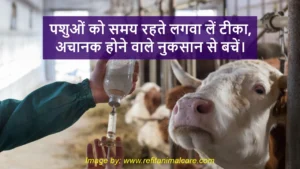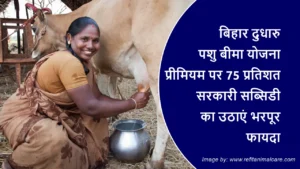
Ketosis, also known as Acetonemia, is a metabolic disorder commonly affecting dairy cattle during the transition period from late pregnancy to early lactation. Ketosis is an elevated concentration of ketone bodies in all body fluids. It occurs when the cattle’s or buffaloes’ energy demands exceed their energy intake, leading to a negative energy balance. A breakdown of body fat for fuel occurs when blood glucose level drops leading to the mobilization of body fat which gets processed in the liver to meet the body’s energy requirements. This is most consistently characterized by hyporexia and reduced milk production. Low blood sugar, high levels of ketone bodies in the blood, and presence of ketone bodies in urine are the characteristic features of ketosis in cattle.
Causes of Ketosis in Cattle
- The main cause is negative energy balance especially when the cattle expend more energy for milk production as compared to what she consumes through the feed.
- Low-quality fodder, inadequate food intake, or any such sudden changes in diet.
- Any or every reason that can impair glucose production in the body because of either liver dysfunction or hormonal imbalances.
- Some other factors such as stress, illness, and longer inter calving period.
Bovine Ketosis Symptoms or Cow Ketosis Symptoms
Some of the symptoms of Ketosis in Cattle includes:
- Fever
- Rapid weight loss
- Reduced milk production
- Abnormal gait, humped back posture
- Nervousness signs such as staggering and falling and circling
- Loss of appetite or decreased appetite
- Lethargy, less active, disinterested, and depression in cattle
- A peculiar acetone-like odour or sweet odour in the breath
- Decreased milk fat content with an abnormal odour or taste in milk
Diagnosis of Ketosis in Cattle
- Blood Tests – Measure blood beta-hydroxybutyrate (BHB) levels. It is the most accurate method for diagnosis of ketosis in cattle.
- Milk Tests – Levels of ketone in milk can also be used as a screening tool though they are less precise as compared to blood tests.
- Urine Tests – Levels of ketone in urine can also be used as a screening tool though they are less precise as compared to blood tests.
Bovine Ketosis Treatment or Cow Ketosis Treatment
Treatment of Ketosis in Cattle is very precise and includes:
- The first and foremost action to be taken as a treatment is to try to restore blood glucose levels as quickly as possible.
- Oral administration of jaggery.
- Intravenous administration of 500ml of 50% dextrose solution is the common therapy given by qualified veterinarians.
- Blood glucose level can be maintained through the administration of glucocorticoids like dexamethasone along with glucose.
- Veterinary glucose or commercial veterinary preparations of propylene glycol can be given orally to improve glucose levels.
- Provide high-energy feeds like grains along with vitamins, and required supplements in regular diet to enhance the forage quality.
- Consult a qualified veterinarian for creating a customized treatment plan.
Prevention of Ketosis in Cattle:
- A well-balanced diet with all required supplements, vitamins, probiotics, and minerals, especially during pregnancy and early lactation periods.
- If needed than introduce dietary changes slowly and steadily to allow the cattle to adapt to the changing dietary conditions.
- Adjust feed intake to prevent excessive weight loss before calving period.
- Let your cattle be stress-free by looking into the factors like overcrowding and abrupt changes in routine.
- Regularly monitoring of milk production, body weight, and overall health by regular testing of urine and milk samples testing up to 2 months after calving.
- Sodium Bicarbonate may be incorporated in feed to prevent development of acidosis due to excess concentrate feeding
Ketosis in cattle is preventable. By regular monitoring of ketosis symptoms in cattle and communicating bovine or cow ketosis symptoms with relevant people, awareness can be created for early bovine or cow ketosis treatment. Thus, by communicating and spreading awareness about the preventive measures, providing a balanced diet with feed supplements like R-Booster by Refit Animal Care, and monitoring health the risk of ketosis can be reduced considerably. R-Booster improves blood sugar levels, is useful in lumpy skin disease treatment, prevents parturition-related disorders and ketosis, and also augments milk production in cattle.









